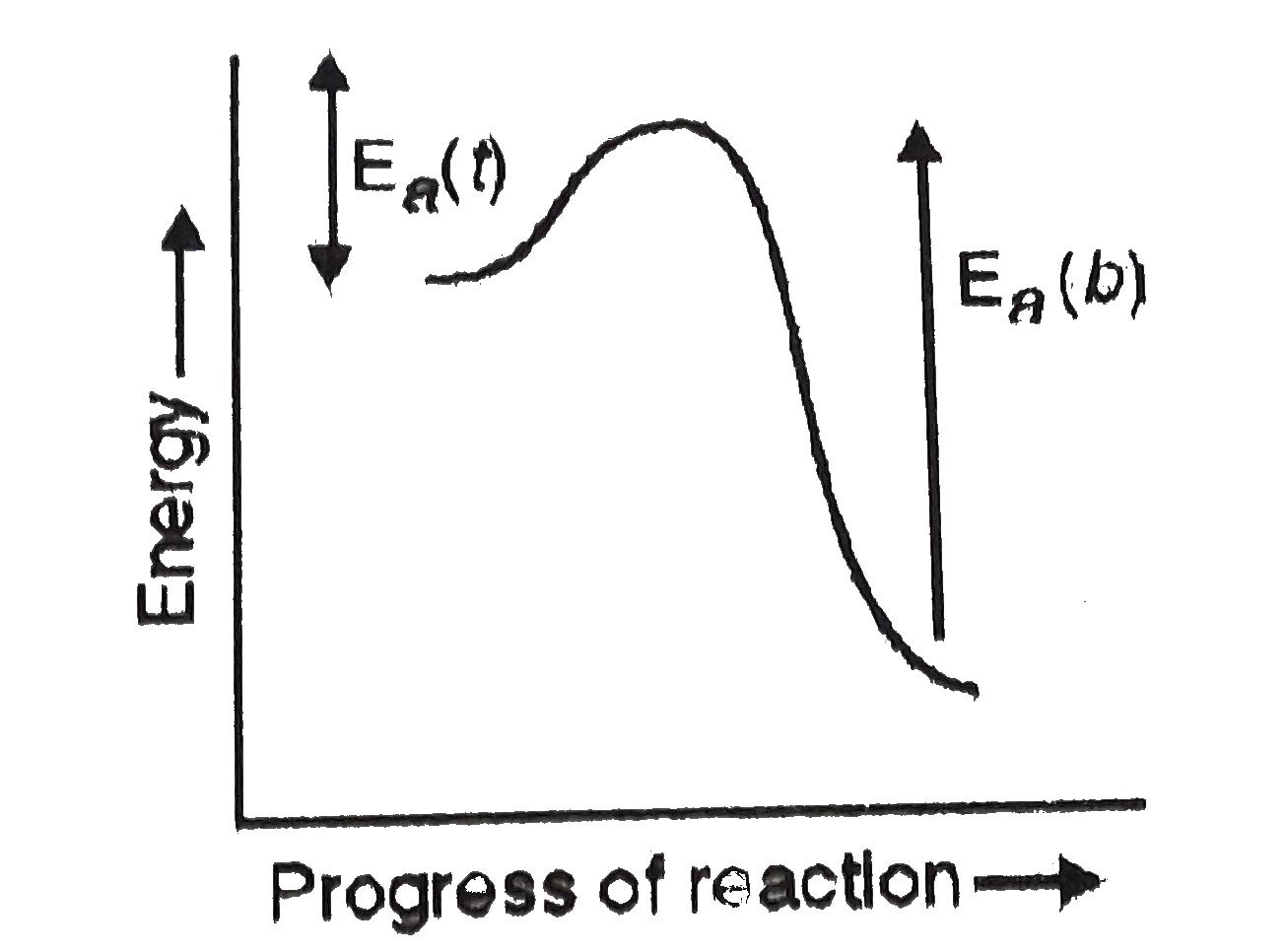Equilibrium constant, K changes with temperature. At 300 K, equilibrium constant is 25 and at 400 K it is 10. Hence, backward reaction will have energy of activation
A
equal to that of forward reaction
B
less than that of forward reaction
C
greater than that of forward reaction
D
given values are not sufficient to explain given statement.
Video Solution
Text Solution
The correct Answer is:C
log.K2K1=ΔH2.303×R[T2−T1T1T2]
ΔH=2.303×RT1T2(T2−T1)log.K2K1
=2.303×8.314×300×400400−300log.1025
=2.303×8.314×300×400100log.1025<0
As ΔH is -ve , the reaction is exothermic.

Hence, Ea ( backward) is more than Ea ( forward).
|
Topper's Solved these Questions
- PHYSICAL AND CHEMICAL EQUILIBRIABOOK - DINESH PUBLICATIONCHAPTER - PHYSICAL AND CHEMICAL EQUILIBRIAEXERCISE - REVISION QUESTION FROM COMPETITIVE EXAMS
124 Videos
- PHYSICAL AND CHEMICAL EQUILIBRIABOOK - DINESH PUBLICATIONCHAPTER - PHYSICAL AND CHEMICAL EQUILIBRIAEXERCISE - SELECTED STRAIGHT OBJECTIVE TYPE MCQs
4 Videos
- PHYSICAL AND CHEMICAL EQUILIBRIABOOK - DINESH PUBLICATIONCHAPTER - PHYSICAL AND CHEMICAL EQUILIBRIAEXERCISE - ULTIMATE PREPARATORY PACKAGE
13 Videos
- P BLOCK ELEMENTS (GROUP 13 AND 14 )BOOK - DINESH PUBLICATIONCHAPTER - P BLOCK ELEMENTS (GROUP 13 AND 14 )EXERCISE - Straight obj.
17 Videos
- RATES OF REACTIONS AND CHEMICAL KINETICSBOOK - DINESH PUBLICATIONCHAPTER - RATES OF REACTIONS AND CHEMICAL KINETICSEXERCISE - Ultimate Preparatory Package
29 Videos
Similar Questions
Knowledge Check
Equilibrium constant, K changes with temperature. At 300 K, equilibrium constant is 25 and at 400 K it is 10. Hence, backward reaction will have energy of activation
Aequal to that of forward reactionBless than that of forward reactionCgreater than that of forward reactionDgiven values are not sufficient to explain given statement.The equilibrium constant of a reaction is 20.0. At equilibrium, the reate constant of forward reaction is 10.0. The rate constant for backward reaction is :
A0.5B2.0C10.0D200.0The equilibrium constant (K) of a reaction may be written as
AK=e−ΔG/RTBK=e−ΔG∘RTCK=e−ΔH/RTDK=e−ΔH∘RT
The equilibrium constant (K) of a reaction may be written as
View SolutionIf K1 is the equilibrium constant at temperature T1andK2 is the equilibrium constant at temperature T2and If T2>T1 and reaction is endothermic then
View SolutionGibbs energy change ΔG is related to equilibrium constant 'K'. As
View SolutionIn an equilibrium reaction for which ΔG∘=0 , the equilibrium constant K =
View SolutionThe equilibrium constant of a reaction is 1×1020 at 300K. The standard free energy change for this reaction is :
View Solution